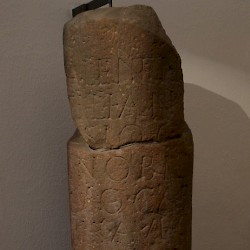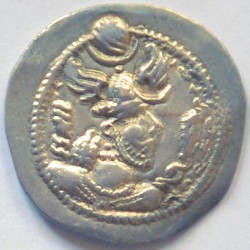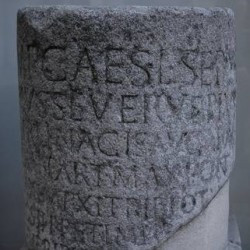Jona Lendering
Jona Lendering read history at Leiden University (MA 1993), specialized in Mediterranean culture at the Amsterdam Free University (MA 1996), and worked at excavations in Holland (Riethoven) and Greece (Halos). After teaching historical theory and ancient history at the Free University for several years, he was one of the founders of a school for history teaching, Livius Onderwijs. Born in Amsterdam, it has now spread to auxiliary locations in Bussum, Dronten, Gouda, Haarlem, Hoorn, Schagen, Zaanstad, and Zoetermeer. As of 2013, Livius Onderwijs has eight teachers, about 500-600 students a year, and offers tours to countries like Italy, Turkey, Iran, and Lebanon. The field trips help to etch into the students' minds some of what they've learned at the school.
Because history is for a large part telling a story, something you do best in your own language, Lendering prefers to publish in Dutch journals. However, he has contributed to the Bryn Mawr Classical Review and Ancient Warfare, while he is the founder of Ancient History Magazine. He is also the publisher and editor of the on-line publication of the Babylonian Chronicles of the Hellenistic Period, a set of important cuneiform sources for the history of the Seleucid and Parthian Near East, transcribed, translated and commented on by Bert van der Spek of the Free University Amsterdam and Irving Finkel of the British Museum. A publication as book is in preparation.
Lendering has written several books and maintains a blog in Dutch. He is the author of several books, including Edge of Empire and Consensus and Crises. For the Livius website, which has received several awards, he collaborates closely with Bill Thayer of LacusCurtius. Lendering is also the webmaster of two daily blogs, the MainzerBeobachter.com and Grondslagen.net.
There are 9380 items in Jona Lendering:

Karun, upper reaches (along the road from Yasuj to Isfahan) |
Kashta
Kashta (mid-eighth-century BCE): name of a Nubian king.Relatives Wife: Pebatjma, probably his sister Sons: Piye (probably), Shabaqo Daughters: Amenirdis I (Great Wife of Amun in Thebes), Peksatar (wife of Piye), Khensa (wife of Piye), Nefrukekashta (wife of Piye) Life Succeeds Alara, who may have been…Kassites / Cossaeans
Kassites (Akkadian Kaššu): tribal federation living in the Zagros mountains, in modern Luristan. In the seventeenth century BCE, they threatened Babylonia, which they captured in the fifteenth century. More than a millennium later, they are mentioned - now called Cossaeans…

Kaufenheim, Milestone mentioning the emperor Hostilian |
Kavad I
Kavad I: king of Persia, ruling from 488 to 496 and from 498 to 530, member of the Sasanian dynasty. Kavad…

Kavad I |
Kavad II
Kavad II: king of Persia, ruling from 628 to 630, member of the Sasanian dynasty.Main deeds: Name: Sheroe Reign: In 628 CE Successor of: Khusrau II the Victorious Early in 628, crown prince Sheroe put his father put in jail, where he would die…

Kavala, Animal capital |
Kavala, Archaeological Museum
Archaeological museum with finds from Kavala and surroundings. There are 5 items in Kavala, Archaeological Museum: …

Kavala, Milestone of Septimius Severus |
Kavar bridge
Kavar bridge: Sasanian bridge along the road from Shiraz to Firuzabad, spanning the Qara Aqaj River. Kavar bridge In 224 CE, the…

Kavar, Sasanian bridge |